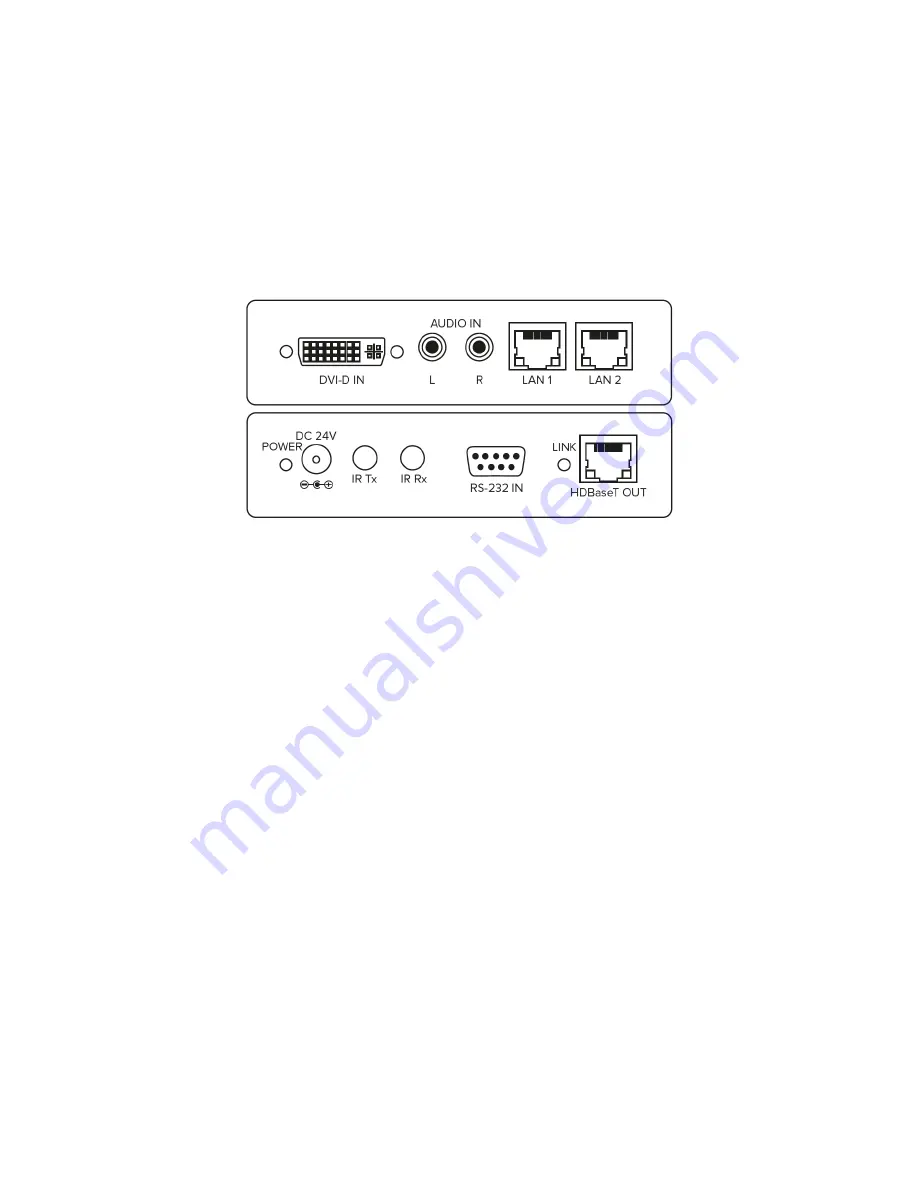
5
4.0
CONNECTING THE HARDWARE
Referring to the drawings below, connect the proper cables and then connect the AC
power adaptor.
Note: The resolution capability of the remotely located display devices must be capable of displaying the output of the
source device. Before using the extender system, verify that the display device on the receiving end can support the
output resolution and signal format by connecting it directly to the source device.
4.1
1T-CT-551 Transmitter
1.
Connect the DVI source device’s output to the DVI IN port of the 1T-CT-551
Transmitter, using an appropriate DVI cable, (1 Meter (~3’) in length for 12 bit signals,
10 meters (~33’) for 8 bit signals).
2.
Connect the analog audio source device’s output to the AUDIO IN ports of the 1T-
CT-551 Transmitter, using appropriate RCA audio cables.
3.
(OPTIONAL)
If there is an IR controllable device on the 1T-CT-551 side that you wish
to control remotely from the 1T-CT-552 side, connect the IR Emitter device to the IR
Tx connector on the 1T-CT-551. If there is an IR controllable device on the 1T-CT-
552 side that you wish to control remotely from the 1T-CT-551 side, connect the IR
Receiver device to the IR Rx connector on the 1T-CT-551.
4.
Connect the Cat.5e or Cat.6 cable to the transmitter via the HDBaseT OUT port.
Ensure that the RJ45 connector is securely locked into the transmitter’s port.
5.
If using the RS-232 control feature, connect the RS-232 device to the 1T-CT-551 via
the DB-9 port.
6.
If you wish to transmit Ethernet signals between the 1T-CT-551 and 1T-CT-552,
connect an Ethernet cable/device via one of the RJ45 LAN ports.
7.
Connect the 24v AC power adapter’s DC power connector to the 1T-CT-551
Transmitter.




























